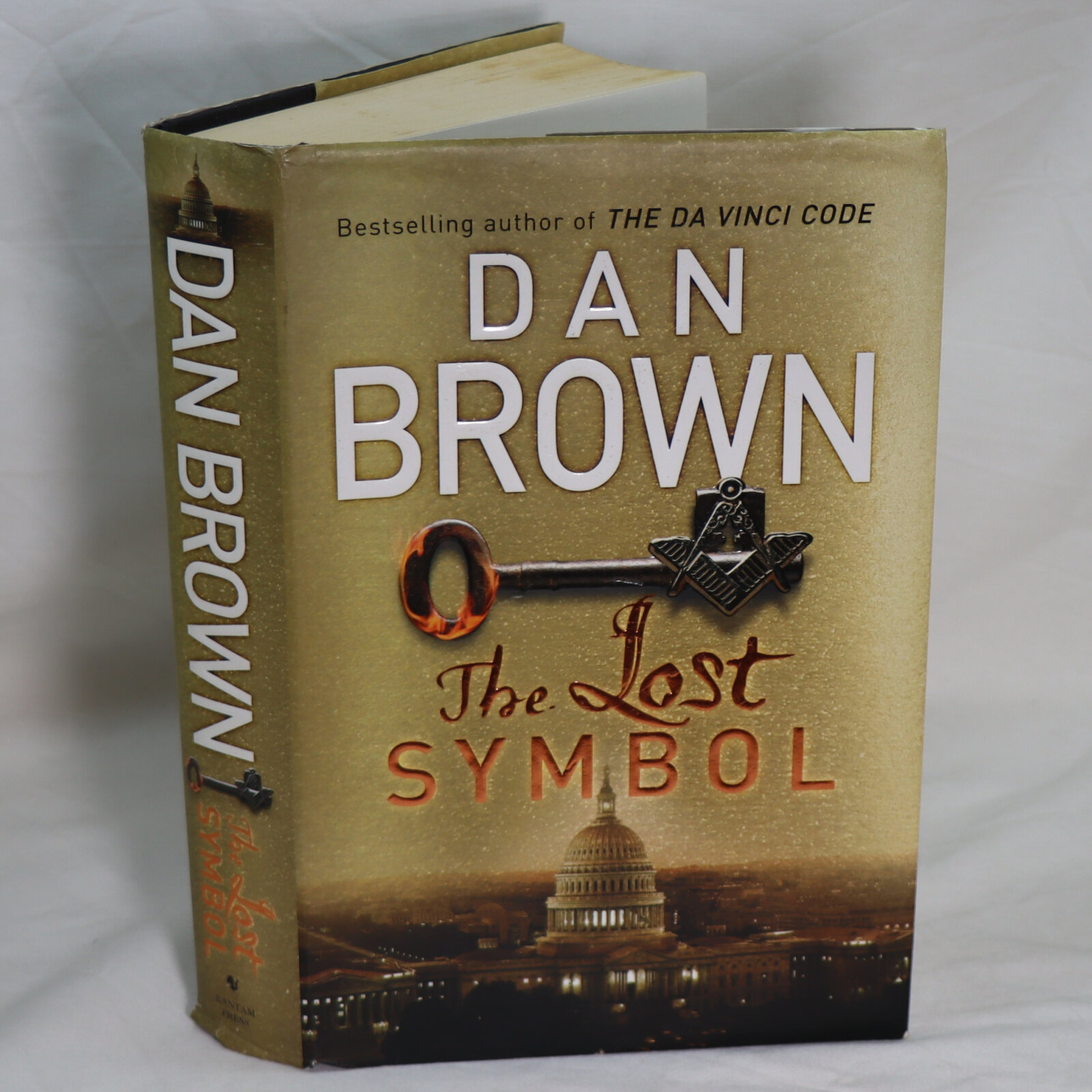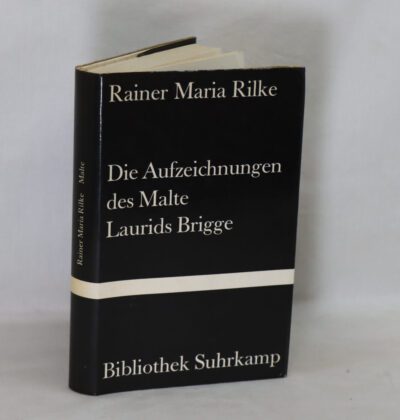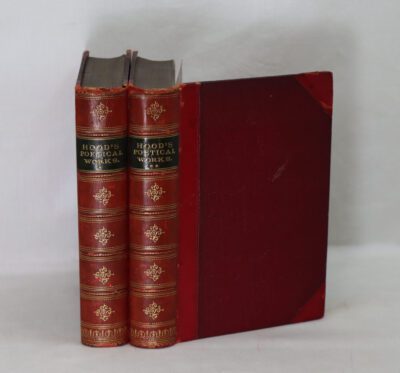The Lost Symbol.
By Dan Brown
ISBN: 9780307950680
Printed: 2009
Publisher: Bantam Press. London
| Dimensions | 17 × 24 × 5 cm |
|---|---|
| Language |
Language: English
Size (cminches): 17 x 24 x 5
Condition: Fine (See explanation of ratings)
Item information
Description
In the original dustsheet. Black cloth binding with gilt title on the spine.
-
F.B.A. provides an in-depth photographic presentation of this item to stimulate your feeling and touch. More traditional book descriptions are immediately available.
WHAT WAS LOST WILL BE FOUND…
Washington DC: Harvard symbologist Robert Langdon is summoned at the last minute to deliver an evening lecture in the Capitol Building. Within moments of his arrival, however, a disturbing object – gruesomely encoded with five symbols – is discovered at the epicentre of the Rotunda. It is, he recognises, an ancient invitation, meant to beckon its recipient towards a long-lost world of hidden esoteric wisdom.
When Langdon’s revered mentor, Peter Solomon – philanthropist and prominent mason – is brutally kidnapped, Langdon realizes that his only hope of saving his friend’s life is to accept this mysterious summons and follow wherever it leads him.
Langdon finds himself quickly swept behind the facade of America’s most historic city into the unseen chambers, temples and tunnels which exist there. All that was familiar is transformed into a shadowy, clandestine world of an artfully concealed past in which Masonic secrets and never-before-seen revelations seem to be leading him to a single impossible and inconceivable truth.
A brilliantly composed tapestry of veiled histories, arcane icons and enigmatic codes, The Lost Symbol is an intelligent, lightning-paced thriller that offers surprises at every turn. For, as Robert Langdon will discover, there is nothing more extraordinary or shocking than the secret which hides in plain sight…
Reviews:
-
Vehicles move through the murky night, carrying highly secret material. And that clandestine material will only be available–after midnight–to those who have signed non-disclosure notices. The plot of the new Dan Brown novel? No, it’s actually how reviewers such as myself obtained our copies of the much-anticipated The Lost Symbol, the follow-up to the Da Vinci Code. And as we read it in (literally) the cold light of dawn, we wonder: is it likely to match the earlier book’s all-conquering, phenomenal success? Firstly, it should be noted that The Lost Symbol has incorporated all the elements that so transfixed readers in The Da Vinci Code: a complex, mystifying plot (with the reader set quite as many challenges as the protagonist); breathless, helter-skelter pace (James Patterson’s patented technique of keeping readers hooked by ending chapters with a tantalisingly unresolved situation is very much part of Dan Brown’s armoury). And, of course, the winning central character, resourceful symbologist Robert Langdon, is back, risking his life to crack a dangerous mystery involving the Freemasons (replacing the controversial trappings of the Catholic Church and homicidal monks of the last book). And while Dan Brown will never win any prizes for literary elegance, his prose is always succinctly at the service of delivering a thoroughly involving thriller narrative in vividly evoked locales (here, Washington DC, colourfully conjured).Robert Langdon flies to Washington after an urgent invitation to speak in the Capitol building. The invitation appears to have come from a friend with copper-bottomed Masonic connections, Peter Solomon. But Langdon has been tricked: Solomon has, in fact, been kidnapped, and (echoing the grisly opening of the last book) a macabre mutilation plunges Langdon into a tortuous quest. His friend’s severed hand lies in the Capitol building, positioned to point to a George Washington portrait that shows the father of his country as a pagan deity. The ruthless criminal nemesis here is another terrifying figure in Brown’s gallery of grotesques: Mal’akh, a powerfully built eunuch with a body festooned with tattoos. Mal’akh is seeking a Masonic pyramid that possesses a formidable supernatural power, and a pulse-pounding hunt is afoot, with Langdon stalled rather than aided by the CIA. Caveats are pointless here; Dan Brown, comfortably the world’s most successful author, is utterly review-proof. And there’s no arguing with the fact that he has his finger on the pulse of the modern thriller reader, furnishing the mechanics of the blockbuster adventure with energy and invention. Like its predecessor, The Lost Symbol will unquestionably be–in fact, already is–a publishing phenomenon. –Barry Forshaw
-
“The wait is over. The Lost Symbol is here–and you don’t have to be a Freemason to enjoy it…THRILLING AND ENTERTAINING, LIKE THE EXPERIENCE ON A ROLLER COASTER” (Los Angeles Times)
-
“Dan Brown brings sexy back to a genre that had been left for dead…His code and clue-filled book is dense with exotica…amazing imagery…and the nonstop momentum that makes The Lost Symbol impossible to put down. SPLENDID…ANOTHER MIND-BLOWING ROBERT LANGDON STORY” (Janet Maslin New York Times)
-
“With best-seller status never in doubt, Brown has written another page-turner…A gripping read” (BBC News)
-
“So compelling that several times I came close to a cardiac arrest…The Lost Symbol is as perfectly constructed as the Washington architecture it escorts us around.” (Sunday Express)
-
“Unputdownable…Gripping…
Jaw-dropping…The blockbuster read of the year” (News of the World)
Daniel Gerhard Brown (born June 22, 1964) is an American author best known for his thriller novels, including the Robert Langdon novels Angels & Demons (2000), The Da Vinci Code (2003), The Lost Symbol (2009), Inferno (2013), and Origin (2017). His novels are treasure hunts that usually take place over a period of 24 hours.They feature recurring themes of cryptography, art, and conspiracy theories. His books have been translated into 57 languages and, as of 2012, have sold over 200 million copies. Three of them, Angels & Demons, The Da Vinci Code, and Inferno, have been adapted into films, while one of them, The Lost Symbol, was adapted into a television show.
The Robert Langdon novels are deeply engaged with Christian themes and historical fiction, and have generated controversy as a result. Brown states on his website that his books are not anti-Christian and he is on a “constant spiritual journey” himself. He states that his book The Da Vinci Code is “an entertaining story that promotes spiritual discussion and debate” and suggests that the book may be used “as a positive catalyst for introspection and exploration of our faith.”
Want to know more about this item?

Related products
Share this Page with a friend











